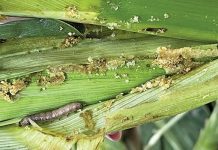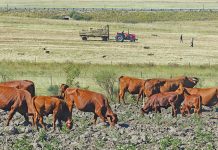South Africa’s wildlife ranches could develop into an industry envied by governments and conservationists worldwide – if they consolidate, play up their strengths and overcome their weaknesses.
Roughly 6 000 game ranches are exempted to allow hunting throughout the year in South Africa. Each covers 2 000ha on average, putting some 20,5 million hectares or 16,8% of South Africa’s available land under private conservation, more than double the 7,5 million hectares of the national and provincial reserves combined.
These private reserves generate over R4 billion annually, according to the chairperson of Wildlife Ranching SA (WRSA) Dr Gert Dry.
His colleague Dr Peter Oberem adds the turnover of live game sales has increased steadily over recent years, with many record prices for so-called rare species such as sable antelope and buffalo. “The run of the mill plains game prices increased by as little as 4% over the last five years, significantly lower than inflation,” he said. “Commercial venison sales are currently unmonitored and largely neglected. Tourism is a profitable addition to the industry, but the number of outlets and facilities is increasing so fast the market may be saturated in a few years.”
Weaknesses to overcome
“Government gives wildlife ranching little support for two main reasons,” Dr Dry explains. “Firstly, historically it’s been very poorly organised with no real ‘voice’. But WRSA is making major progress. It currently represents 9 600 game and ecotourism ranchers. “However, it hasn’t made enough progress to gain status footing with government. The authorities see the industry as a plaything for ‘rich white men’ that doesn’t contribute to food security.
“Secondly, wildlife ranching isn’t considered part of the agricultural industry and is controlled by the Department of Environmental Affairs and Tourism (DEAT). The impact of this was illustrated after the devastating fires in the Waterberg region. While the Department of Agriculture provided fodder for stock farmers, wildlife ranchers received no help whatsoever.”
Dr Dry says the industry has also failed to benefit fully from its primary commercial product, venison, and it is vital ranchers start promoting it properly. “All attempts at commercial sustainable marketing were ‘one man’ initiatives, most of which failed. The participation of black ranchers and businesspeople in the industry is essential, and implementing BEE principles and initiatives is mission-critical.”
Threats to deflect
Dr Dry warns unless the industry consolidates and works together through organisations such as WRSA, government’s lack of understanding will worsen.
“This could lead to a moratorium on converting stock farms to wildlife ranches, tougher and more limiting legislation from the DEAT and impractical and unattainable venison hygiene legislation,” he warns. “The Alien and Invasive Species Act has already severely affected the selling price of certain species and subspecies. A decline in veterinary services capacity and a collapse of veterinary research on disease and parasites of game animals will lead to outbreaks and a withdrawal of export licenses for game and/or venison. Many ranchers don’t understand the dangers of intensifying game ranching without sufficient research.” “Many transboundary diseases such as foot-and-mouth will be disastrous, as it’s difficult to establish and maintain effective control measures on extensive areas. A host of diseases or parasites, which could be transmitted to humans such as tapeworm and ‘measles’, aren’t considered threats but intensification will make them a major threat.”
Strengths to draw on Wildlife ranching is a unique industry with many strengths to be exploited and this must be brought to government’s attention. “Well-managed game ranching has far less ecological impact than conventional stock farming,” says Dr Dry. “It’s better suited to most South African biomes than cattle or sheep and uses more of the available vegetation. “The South African bushveld biome is particularly suitable because game isn’t susceptible to many of the diseases threatening stock farmers. Game animals are more parasite-resistant in their proper biomes.” “There is now far more game in South Africa than a century ago, for example there are about 30 000 buffalo, of which some 90% are disease-free, on 1 918 ranches. South Africa is also considered free of foot-and-mouth disease and East Coast fever.
Apart from venison as the primary product, there are lucrative secondary businesses such as hunting, tourism and manufacturing curios.” The export market for venison has huge potential. “Take the Waterberg region in Limpopo. It could produce over 3 000t of game a year, and there’s no direct competition as no other country in the world is in the position to market ‘wild’ venison. New Zealand’s 30 000t/year venison exports are from farmed animals. “South Africa has the expertise and infrastructure, but research into animal health and diseases transmitted to humans will be crucial to counter negative perceptions about venison and ensure long-term sustainability.”
A future to work towards
“To secure the sustainability of the industry, all game ranchers must work together and organise themselves into a single organisation,” says Dr Dry. “One of WRSA’s main drives is to recruit as many members as possible. It will give the industry the voice it needs to convince government of wildlife ranching’s positives as far as food security, foreign exchange, conservation and job creation are concerned. This will provide us with credibility at government level. We’re committed to sustainable wildlife ranching, promoting environmentally compatible ranching and guarding against the dangers of intensification.” Contact WRSA on (012) 335 6994.
Source: WRSA and Agri Connect. |fw








